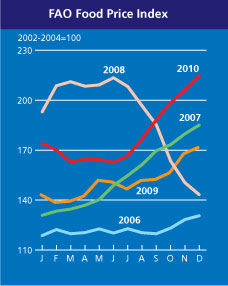According to a new paper published in the journal Environmental Science and Technology, “Land Availability for Biofuel Production,” authored by researchers from the University of Illinois, using detailed land analysis, biofuel crops cultivated on available land could produce up to half of the world’s current fuel consumption. This could be done, the researchers say, without negatively affecting food crops or pastureland.
The study was led by civil and environmental engineering professor Ximing Cai who identified land around the globe available to produce grass crops for biofuels, with minimal impact on agriculture or the environment. Cai noted going into the study that prior research concentrated on biofuel crop viability focused on biomass yield or how productive a crop could be regionally; yet, there was little research on land availability, a key constraint of biofuel development. He also noted that there is major concern as to whether, on a global scale, biofuels can meet fuel demand without compromising food production.
 “The questions we’re trying to address are, what kind of land could be used for biofuel crops? “If we have land, where is it, and what is the current land cover?” said Cai.
“The questions we’re trying to address are, what kind of land could be used for biofuel crops? “If we have land, where is it, and what is the current land cover?” said Cai.
For this particular study, Cai’s team assessed land availability from a physical perspective – focusing on soil properties, soil quality, land slope, and regional climate. The researchers collected data on soil, topography, climate and current land use from some of the best data sources available, including remote sensing maps but the point of differentiation of this research was that the study only considered marking land for biofuel crops. By doing this, current crop land, pasture land and forests were ruled out as viable land options for biofuel production. In addition, the research team ruled out any land that must be irrigated, thus eliminating concerns over the need to divert water from agriculture crops.Read More




 Cellulosic ethanol from the nation’s largest ethanol producer is powering a cross country road trip of the non-profit EcoTrek Foundation to showcase renewable fuels and educate the public about environmental issues.
Cellulosic ethanol from the nation’s largest ethanol producer is powering a cross country road trip of the non-profit EcoTrek Foundation to showcase renewable fuels and educate the public about environmental issues.





 The
The  USB is investing in an outreach effort by the biodiesel industry to spread the word that biodiesel is the only commercially available advanced biofuel. “It’s here today, it’s available now,” said Haer. “We have 1.4 billion gallons of production capability and we just need to get it going.”
USB is investing in an outreach effort by the biodiesel industry to spread the word that biodiesel is the only commercially available advanced biofuel. “It’s here today, it’s available now,” said Haer. “We have 1.4 billion gallons of production capability and we just need to get it going.”  Retired General Wesley Clark visited the second
Retired General Wesley Clark visited the second 